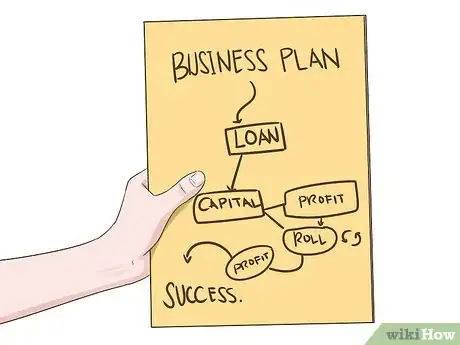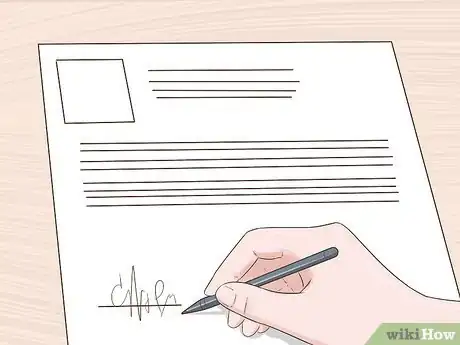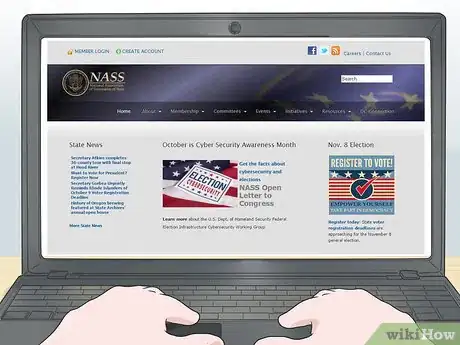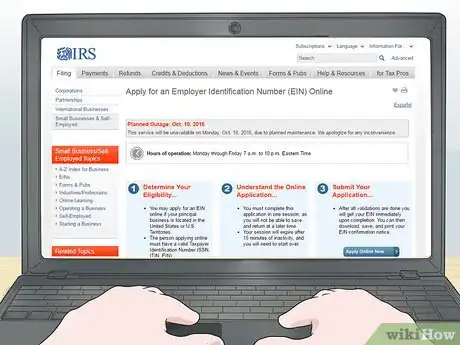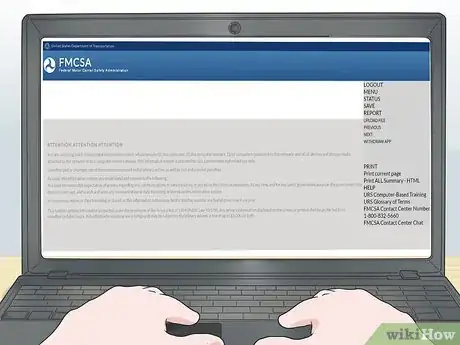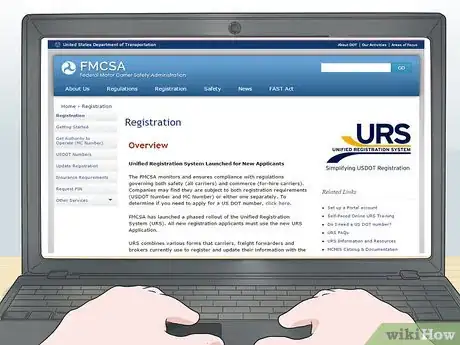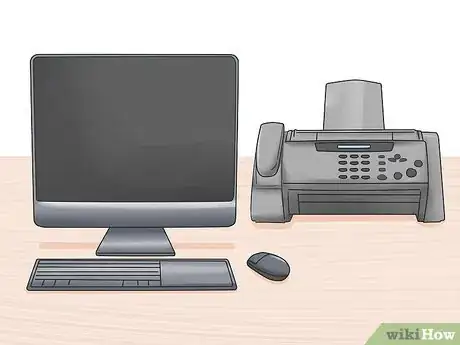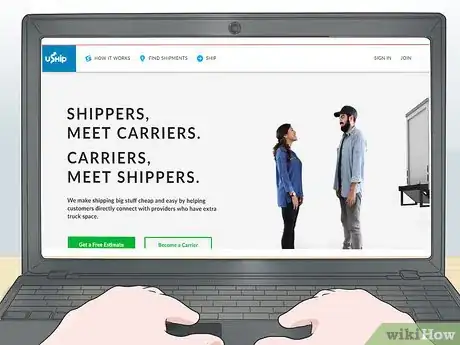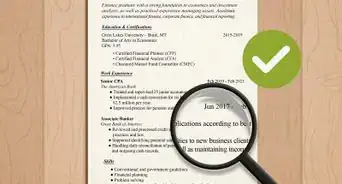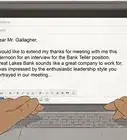This article was co-authored by wikiHow Staff. Our trained team of editors and researchers validate articles for accuracy and comprehensiveness. wikiHow's Content Management Team carefully monitors the work from our editorial staff to ensure that each article is backed by trusted research and meets our high quality standards.
There are 10 references cited in this article, which can be found at the bottom of the page.
wikiHow marks an article as reader-approved once it receives enough positive feedback. In this case, 97% of readers who voted found the article helpful, earning it our reader-approved status.
This article has been viewed 46,783 times.
Learn more...
If you want to work in the exciting field of freight brokerage, you'll need to become licensed. Although this can be a fairly involved process, we're here to help you navigate the steps to make this dream a reality!
Steps
Setting up Your Business
-
1Create a business plan. Although it isn’t mandatory to create a business plan first, it’s a good idea. You’ll be able to get a good idea of the upcoming startup costs, and it will make it many times easier to obtain funding from banks and other lenders. Your business plan should include:[1]
- A summary of your business goals.
- An overview of the industry, including your specific market and the factors which shape it.
- An overview of your customer base. You’ve got to have some idea how you’re going to get money. You should identify possible shippers and carriers. If you can’t, at least identify how you will go about getting them. Try to be as specific as possible.
- A section which identifies your competitors, their strengths and weaknesses, and how you will adapt and survive in their midst.
- A marketing plan. Explain how you will tell possible customers about your business.
- A detailed analysis of your financial plan, including startup costs, revenue projections, and the road to turning a profit.
-
2Get training. Formal training isn’t legally required to become a freight broker. Many freight brokers are former truckers or former agents who worked for brokerages. If you have the time and the access to get hands-on experience, you should take the opportunity. Get a job working as a truck driver, as a dispatcher with a trucking company, or in the warehouse of a logistics firm.[2]
- Luckily, there are alternatives for individuals who can’t spend several years in a de facto apprenticeship. If that sounds like you, investigate freight broker training programs to see which one is right for you.
- Since freight broker training programs aren’t accredited, it’s difficult to gauge their relative quality. In order to get an idea of the reputation of a school you’re investigating, research the instructor’s experience and check out their rating with the Better Business Bureau.
Advertisement -
3Pick out a name and business form. You need to pick out a unique name for your business and decide what type of business form you’d like to assume. Deciding what type of business form to assume can be complicated, and you can read a detailed account at Register a Company. However, there are a few basics to keep in mind:[3]
- Sole proprietorships are the worst type of business format, unless you have so little start-up capital that you can’t afford registration fees for other business forms. It’s a bad format because it doesn’t treat the business’ assets and liabilities as separate from your personal assets. That means if your business loses a lawsuit, the party you owe money to can seize your personal property to satisfy the judgement.
- A corporation is the most expensive type of business to set up, but provides the most protection from liability, perpetuity, and the easiest access to capital.
- A limited liability company, or LLC, combines a lot of good features from sole proprietorships and corporations. Like a sole proprietorship, they are fairly cheap to register. Like a corporation, they provide some protection from liability.
-
4Register with the secretary of state’s office. Once you’ve picked out a name and business form, you’ll need to register with the secretary of state’s office wherever you’ve decided to incorporate. They will check to make sure that you aren’t using a name that’s already taken and examine your articles of incorporation, among other procedural steps.
- There is always a filing fee for registering a business, and the fee varies substantially from jurisdiction to jurisdiction. You can find out what the fees and procedures are at any of the fifty secretary of state websites, which can be found at http:// http://www.nass.org/.
-
5File for an Employer Identification Number (EIN). You’ll need to identify what type of business form you’re taking, principal officers or partners, and identifying information like the address of the business.[4]
- Applying for an EIN is a quick process, and you should be able to complete it in fifteen minutes or less. However, you’ll have to complete it in one session; there’s no saving your work. Apply at https://www.irs.gov/businesses/small-businesses-self-employed/apply-for-an-employer-identification-number-ein-online.
-
6Find reliable carriers. It’s a good idea to establish relationships with some reliable carriers before you actually go into business. If you’re already experienced in the business, this probably won’t be difficult. However, if you are new to the business, this might be more challenging.[5]
- One good way to network with others in the industry is by joining the Transportation Intermediaries Association, or TIA. Members gain access to a directory that rates and lists carriers, making it an invaluable resource for a new broker.
Licensing Your New Business
-
1Turn in an application for a USDOT number. Registering with the Department of Transportation is the first step in getting a license. All you’ll need is your EIN, the names and addresses of the company’s officers, and your Dun and Bradstreet (DUNS) number, if you have one.[6]
- The fee for registration is $300, and you can register at https://portal.fmcsa.dot.gov/UrsRegistrationWizard/.
- There are two steps for registration and licensing. The first is getting the USDOT number, and the second is getting the Motor Carrier Operating Authority. Although these are two separate steps, you complete them through the same portal, at https://www.fmcsa.dot.gov/registration.
-
2Pay for a broker bond. A broker bond is a type of surety bond, which is a financial agreement that functions like insurance for job completion. You’ll need a bond valued at $75,000 or more, which will cost between $1500 and $4000 per year depending on your credit.There are numerous firms selling surety bonds, but you want to make sure you find one from a financially strong company. Ratings organizations such as Moody's, Fitch, and Dun and Bradstreet are all well respected, all using a simple alphabetical scale where AAA is the best.[7]
- For example, if one of your carriers’ trucks break down and they are not able to deliver the shipper’s goods, the goods still have to be delivered. That’s where the bond comes in. The bonding company steps in and pays for another carrier to deliver the shipper’s goods, so that the job can be completed.[8]
-
3Find an insurer. You’ll also need an insurance policy to act as a broker with most of the larger carriers. Some types of insurance for freight brokers are specialty products and some aren’t. You can purchase them separately through several insurers or all bundled through one specialty insurer, but you’ll need two kinds at a minimum.[9]
- One type of necessary policy is called contingent cargo insurance, and it covers any gaps in the carrier’s insurance policy. For instance, if a carrier causes harm to another, but the carrier’s insurance isn’t extensive enough to cover the damages, the injured party might sue you. This policy will cover your defense costs.
- You’ll also need a general liability policy for business. Although the premium and the quote will be specific to you, this is not a specialty product, and you can get it though most major insurers. You can also get it through the same insurer that issues the contingent cargo policy.
- As when shopping for any type of insurance, you should get several quotes, check the financial ratings of the insurer through a rating’s agency, and inquire about possible discounts from bundling.
-
4Apply for a freight broker’s license. Finally, you can apply for the license, or the MC Authority. All you have to do is submit the documents verifying your bonding and insurance through the portal at https://www.fmcsa.dot.gov/registration. There is no added fee.
Getting Your Business off the Ground
-
1Save up or borrow some start-up capital. As with virtually any business, a freight brokerage will need a certain amount of start-up capital in order to get off the ground. With the business plan you’ve already completed, you should have a great idea of how much you’re going to need to get operational.[10]
- You should have a minimum of $10,000 to start out with, whether that’s in cash or through a line of credit. Liquid funding is more important to a freight brokerage than most startups, because the broker often pays the carrier for the shipment before the shipper pays the broker.
-
2Purchase equipment. A new freight brokerage won’t need many assets beyond what an ordinary office would need. You’ll want computers, printers, faxes, copiers, a landline phone, a cell phone, high speed internet, and freight brokerage software.[11]
- The software will allow you to automate many functions, track your drivers, and generally be more productive. There are many software programs, but Tailwind, Broker PRO, and Freightview are all highly rated.[12]
-
3Market your business. Finally, you need to let people know that you’re open for business. Implement the marketing strategy you devised when you created your business plan, adding on any appropriate tweaks.[13]
- A great way to jump into the business and establish your reputation is by utilizing online dispatch services. FreightFinder.com, uShip.com, and Direct Freight Services all run online marketplaces allowing you to find truckers at will.
References
- ↑ http://www.forbes.com/sites/davelavinsky/2013/07/18/business-plan-template-what-to-include/2/#73058de72b40
- ↑ http://freightbrokerscourse.com/how-it-works/
- ↑ https://www.suretybonds.org/blog/how-to-become-a-freight-broker-ultimate-guide/
- ↑ https://www.suretybonds.org/img/how-to-become-a-freight-broker.jpg
- ↑ https://www.invoicefactoring.com/freight-brokers/3-tips-to-find-quality-carriers
- ↑ https://www.suretybonds.org/blog/how-to-become-a-freight-broker-ultimate-guide/
- ↑ https://www.suretybonds.org/blog/how-to-become-a-freight-broker-ultimate-guide/
- ↑ https://www.sba.gov/surety-bonds/surety-bonds-basics
- ↑ http://www.transinsurers.com/broker-bonds-and-insurance.html
About This Article
To become a freight broker, write a business plan with information such as the capital you'll need and how your busines will operate. Additionally, find reliable carriers through the Transport Intermediaries Association to deliver your freight. You'll also need to register with the Department of Transport in your state to get a license. If you lack experience in the field, try working as a trucker or dispatcher to learn how freight brokers operate. For tips on how to raise capital for your freight brokerage, read on!
